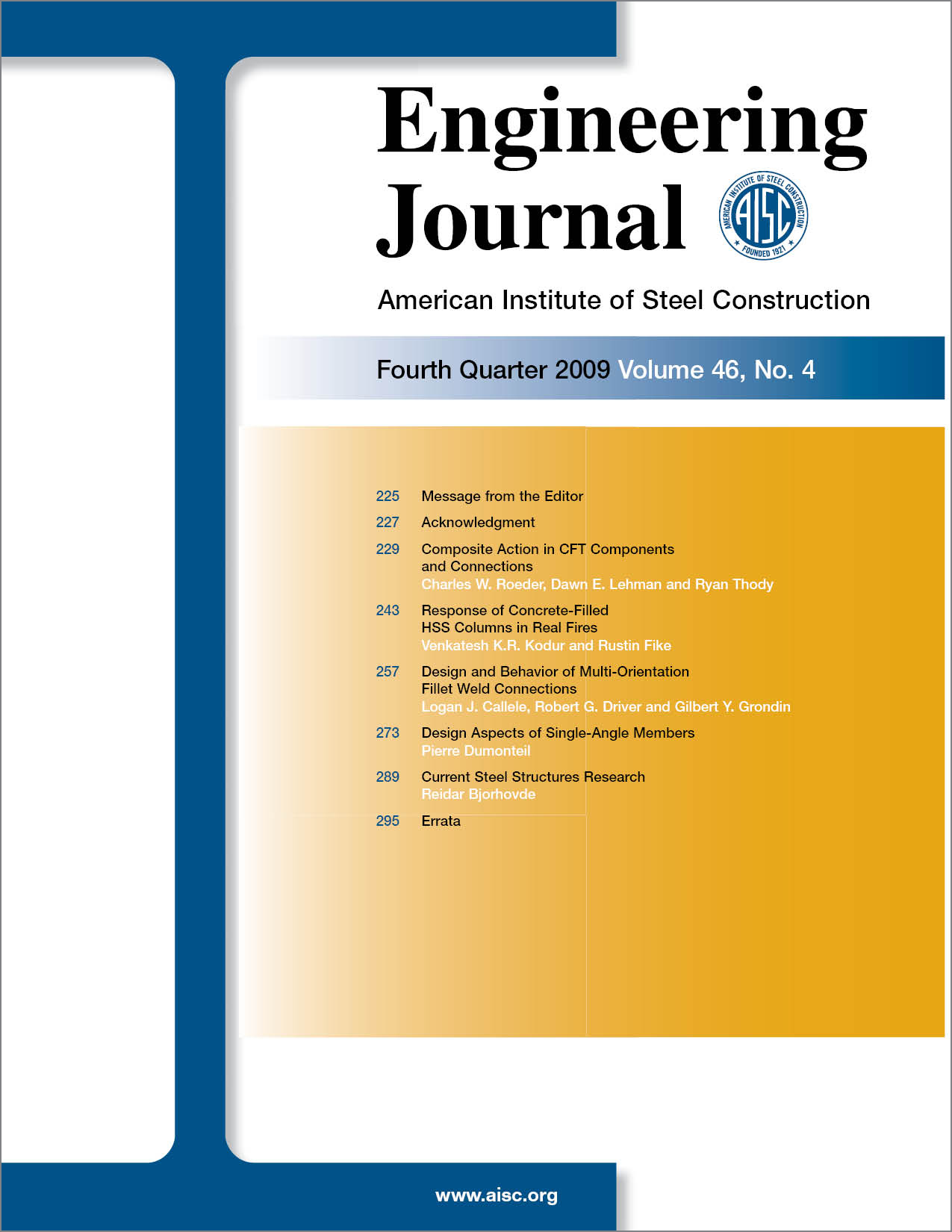Composite Action in CFT Components and Connections
DOI:
https://doi.org/10.62913/engj.v46i4.967Keywords:
bond stress, columns, composite construction, concrete-filled steel tubes, hollow structural sections, tubes, steel structuresAbstract
Concrete-filled steel tube (CFT) components provide an attractive alternative to conventional methods of construction. The steel tube serves as formwork and reinforcement to the concrete fill. The fill delays local buckling of the tube and increases the compressive strength, stiffness and ductility of the CFT member if composite action is achieved. As such, the benefits of using CFT components include their efficiency, economy and ability to provide rapid construction. The primary obstacles to using CFT components relate to achieving adequate shear-stress transfer between the two materials needed for composite behavior and to developing robust, constructible connections. There is considerable interaction between this stress transfer and the connections joining CFT members to other structural elements. In many cases, natural bond stress, primarily friction, is adequate to assure good structural performance of the CFT member, but in other cases mechanical interlock or bearing between the steel and concrete is required. While some mechanical transfer elements may supplement the natural bond transfer, others may destroy this beneficial effect. Additionally, natural bond may be dramatically enhanced by bending of the CFT member and by using appropriate connections to join other members to the CFT element. Therefore, proper quantification and understanding of natural, enhanced and mechanical sources of bond stress are needed to develop robust CFT structural components and their connections.

